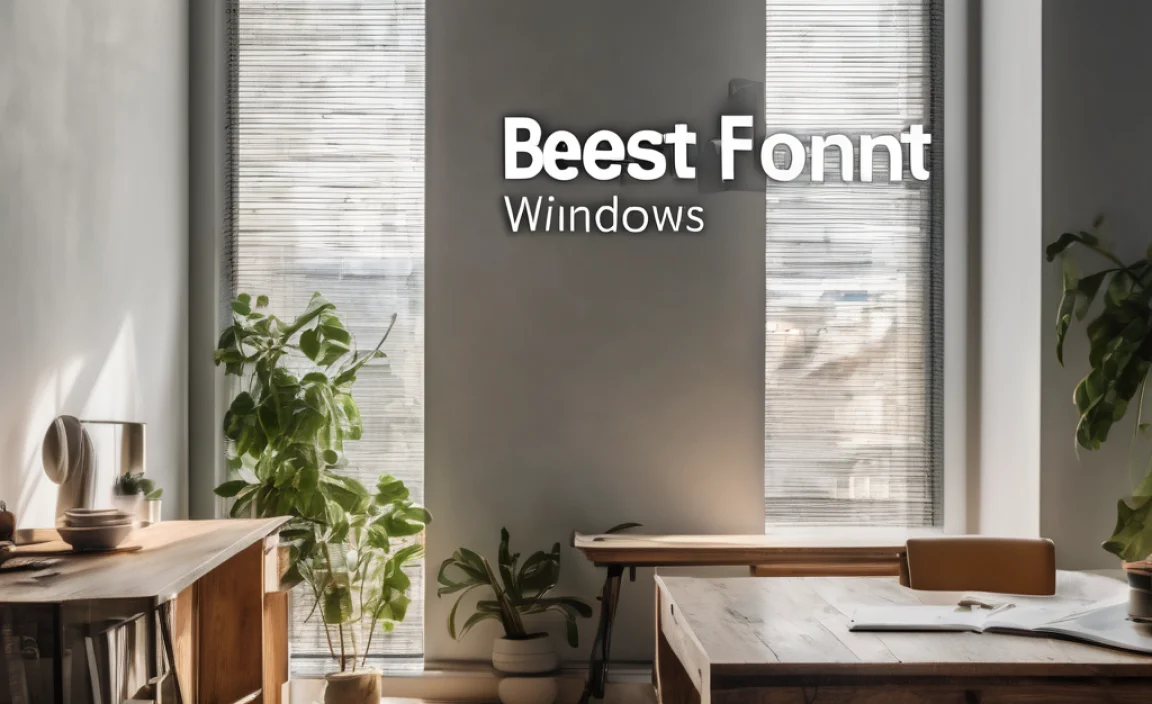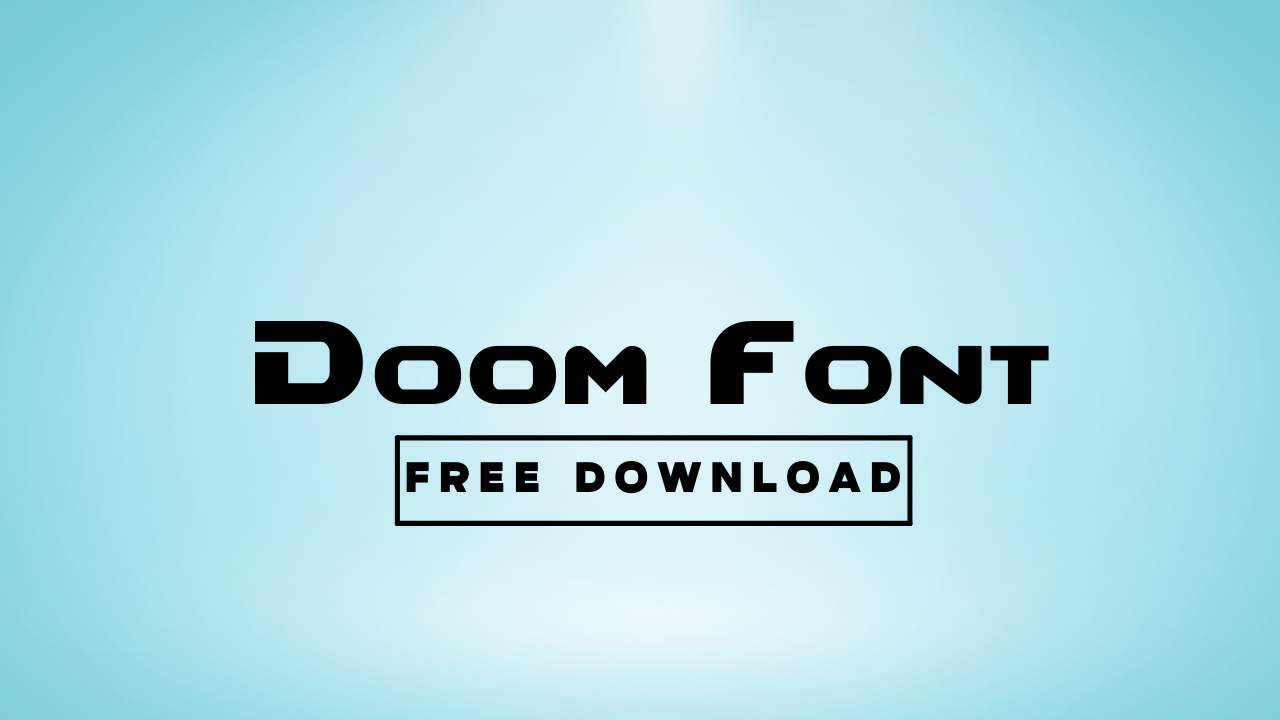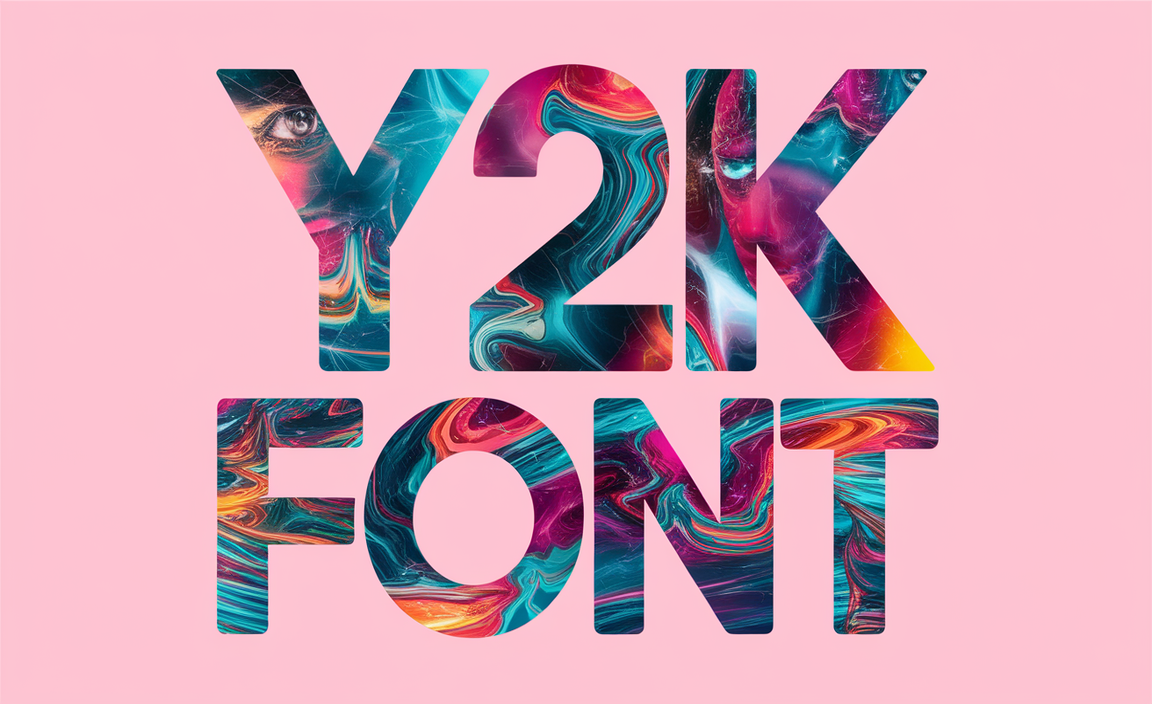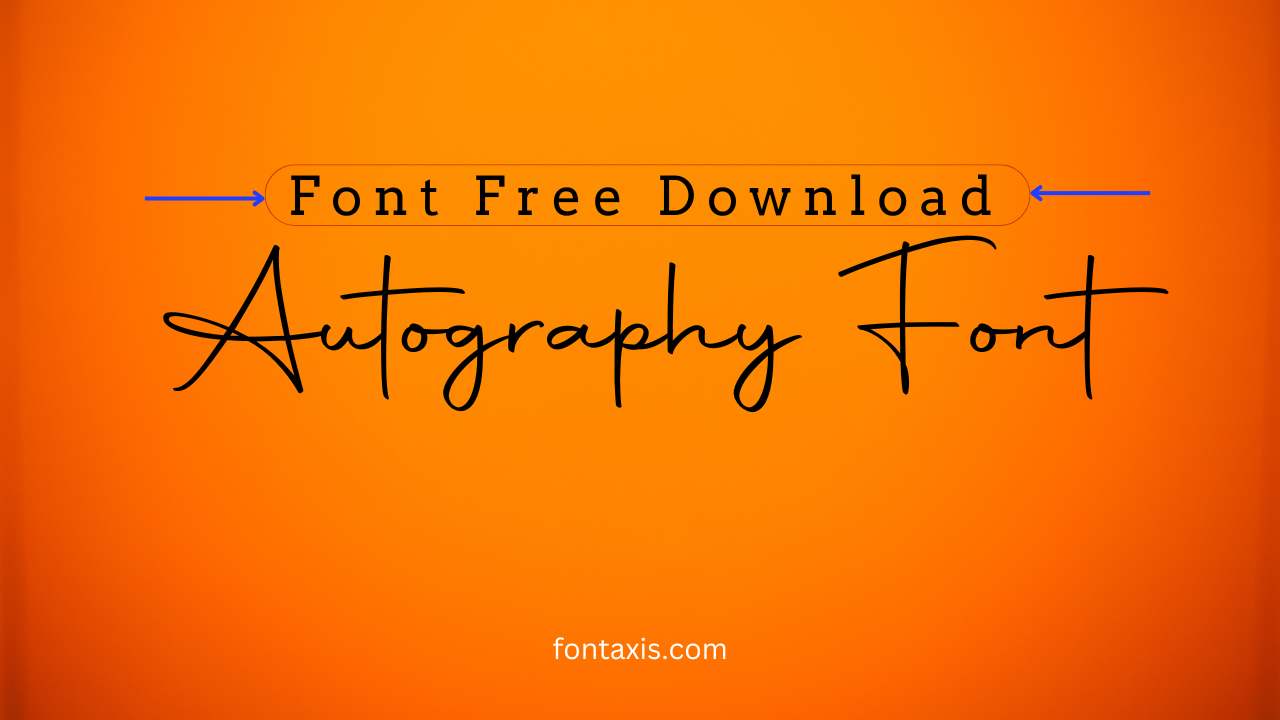The best font for your logo is one that is clear, memorable, and perfectly reflects your brand’s personality and values. It should be easily readable across all applications, from small business cards to large billboards. Consider readability, uniqueness, and scalability to make a genius design choice.
Choosing the best font for your logo can feel a bit like picking the perfect outfit for a big event – it needs to look great, feel right, and make a lasting impression. It’s a common puzzle many designers and business owners face. You want a font that’s not just attractive but also speaks volumes about who you are. Don’t worry, we’ll break down how to find that perfect typographic match for your brand’s visual identity. Let’s dive into making your logo truly shine with the right font!
Why Your Logo Font Choice Matters (A Lot!)
Think of your logo as the handshake of your brand. The font you choose is the way you articulate what your business is all about before anyone even reads a single word. A great font can make your logo instantly recognizable, build trust, and even influence how people feel about your company.
First Impressions: Your logo is often the very first thing a potential customer sees. A well-chosen font makes it look professional and credible.
Brand Personality: Is your brand playful, serious, elegant, or modern? The font is a direct visual cue to your brand’s personality.
Memorability: A unique and fitting font can make your logo stick in people’s minds, making it easier to recall your brand later.
Readability: No matter how stylish, if people can’t easily read your brand name, the font has failed its primary job.
Understanding Font Categories: Your Design Toolkit
Before we pick “the best,” let’s get to know the main types of fonts. Each category brings its own flavor to a logo design.
Serif Fonts: The Traditionalists
Serif fonts have small decorative strokes, or “feet,” at the end of their letterforms. They often convey a sense of tradition, authority, and sophistication. Think of classic newspapers and hardcover books.
Pros:
Convey trust and reliability.
Excellent readability for long blocks of text (though this is less critical for logos).
Often perceived as elegant and timeless.
Cons:
Can sometimes feel old-fashioned if not used carefully.
May not stand out as much in a very modern digital space.
Best For: Law firms, financial institutions, luxury brands, publishing houses, and businesses aiming for a classic, established feel.
For more on the history and impact of serif typefaces, exploring resources from a university like Penn State University Libraries can offer fascinating insights into their evolution.
Sans Serif Fonts: The Modernists
“Sans” means “without,” so sans serif fonts are those without the little feet. They are clean, minimalist, and straightforward, often associated with modernity and approachability. Most modern websites and tech companies use sans serifs.
Pros:
Highly readable on screens and in small sizes.
Feel contemporary, clean, and approachable.
Versatile and can adapt to many brand styles.
Cons:
Can sometimes feel a bit generic if a very common typeface is chosen.
May lack the inherent “gravitas” of serifs for certain traditional industries.
Best For: Tech companies, modern startups, retail brands, and businesses wanting a clean, accessible, and forward-thinking image.
Slab Serif Fonts: The Bold and Sturdy
These are bolder cousins of serif fonts, characterized by thick, block-like serifs. They have a strong personality, conveying robustness, durability, and a touch of retro charm.
Pros:
Very noticeable and can have a strong, impactful presence.
Evoke a sense of strength, stability, and even a bit of a vintage industrial vibe.
Cons:
Can be less versatile than other font types.
Readability can be an issue in very small sizes.
Best For: Food brands, adventure companies, construction businesses, or brands looking for a striking, no-nonsense look.
Script Fonts: The Elegant and Expressive
Script fonts mimic handwriting, ranging from flowing and elegant to casual and brush-like. They add a personal, artistic touch.
Pros:
Can be very unique and expressive.
Convey sophistication, creativity, or a personal touch.
Cons:
Often have readability issues, especially in small sizes or for less legible styles.
Can feel overly casual or too formal depending on the specific script.
Best For: Wedding invitations, creative services, artisanal products, or brands that want a distinctly personal or luxurious feel.
Display Fonts: The Unique and Artistic
This is a broad category for fonts designed for large sizes and short bursts of text, like headlines or, of course, logos. They are often highly stylized and unique, meant to grab attention.
Pros:
Can be incredibly distinctive and memorable.
Allow for maximum creative expression.
Cons:
Almost always unreadable in body text.
Choosing one that isn’t too trendy is key for longevity.
Best For: Brands with a strong visual identity, entertainment industries, or businesses wanting a bold, unconventional look.
The Genius Design Process: How to Choose Your Best Logo Font
Now that you know the players, let’s go through the steps to make a brilliant choice.
Step 1: Define Your Brand’s Personality
This is the most crucial step. Before you even look at fonts, ask yourself:
What are my brand’s core values? (e.g., trustworthy, innovative, fun, luxurious, eco-friendly)
Who is my target audience? What kind of aesthetic appeals to them?
What emotions do I want my brand to evoke?
What is my industry? Are there conventional font choices, and do I want to follow them or break them?
Getting clear on this will act as your compass.
Step 2: Research & Inspiration
Look at what successful brands in your industry are doing – and also what they aren’t doing. Browse design platforms like Dribbble or Pinterest for logo inspiration. Pay attention to the fonts they use.
Competitor Analysis: What fonts do your direct competitors use? Do you want to align with their style or differentiate yourself?
Industry Trends: Are there common typographic styles in your sector? Sometimes aligning can signal belonging, while diverging can create a unique edge.
Mood Boards: Create a visual collection of logos, colors, and imagery that represent your brand’s desired feel. What fonts appear in these inspirations?
Step 3: Explore Font Characteristics
Different font characteristics communicate different messages:
Weight: A bold font feels strong and impactful, while a light font can feel delicate or airy.
X-Height: The height of lowercase letters like ‘x’. A larger x-height generally improves readability.
Stroke Contrast: The variation between thick and thin strokes. High contrast can feel more elegant or traditional; low contrast, more modern and robust.
Spaciousness: Kerning (space between specific letter pairs) and tracking (overall letter spacing) can affect legibility and visual appeal.
Step 4: Consider Readability and Scalability
A genius logo font must work everywhere.
Small Sizes: Will your logo’s name be legible on a business card, a social media avatar, or a tiny app icon?
Large Sizes: Will it look good and clear on a billboard, a banner, or a storefront sign?
Legibility: Avoid overly decorative or complex fonts that are hard to decipher quickly.
It’s often wise to test potential fonts in various sizes and contexts.
Step 5: Test, Test, Test!
This is where the rubber meets the road.
Sketch & Mockup: Try placing your brand name in different font candidates within mockups of your logo. How does it look alongside an icon?
Get Feedback: Ask trusted colleagues, potential customers, or designers for their honest opinions.
Font Pairing (Sometimes): While your logo usually uses one font, consider how it might pair with other fonts you’ll use in your marketing materials. A strong logo font can anchor your brand’s overall typographic system. Reliable resources for font pairing ideas can be found from established design communities.
What Makes a Font “Good Enough” for a Logo?
A good logo font isn’t just pretty; it’s functional and strategic.
Clarity: It must be easy to read.
Uniqueness: It shouldn’t be too common, helping your brand stand out.
Relevance: It should match your brand’s personality.
Timelessness: It should still look good in 5-10 years.
Versatility: It should work across different media and sizes.
This means avoiding fleeting fads unless your brand is intentionally temporary or trend-driven.
Font Selection Checklist: Your Practical Guide
Use this checklist to evaluate potential logo fonts.
| Feature | Criteria | My Chosen Font | Notes |
| :——————- | :——————————————————————– | :————- | :—————————————————————– |
| Brand Alignment | Does it match my brand’s personality and values? | | |
| Readability | Is it easy to read at small and large sizes? | | Test on screen and print mockups. |
| Uniqueness | Does it stand out from competitors? Is it memorable? | | Avoid overused free fonts if possible. |
| Versatility | Can it be used across different media (web, print, merchandise)? | | Consider how it looks in black and white. |
| Timelessness | Does it feel like it will age well? | | Avoid overly trendy styles that might quickly look dated. |
| Distinction | Does it have a distinctive character that fits my brand? | | For sans serifs, consider unique terminal shapes or letter designs. |
| Licensing | Is the license suitable for commercial logo use? | ✓ | Crucial for legal reasons (see below). |
Font Licensing: The Unsung Hero of Logo Design
This is super important and often overlooked by beginners. When you choose a font, you need to ensure you have the correct license to use it in your logo, especially for commercial purposes.
Free Fonts: Many sites offer free fonts, but always check their licensing. Some are for personal use only. A common and reliable source for open-licensed fonts is Google Fonts. Some fonts on Google Fonts are licensed under the Open Font License (OFL), which generally allows for commercial use of the fonts.
Commercial Fonts: These require purchasing a license, often a desktop or web license. Logo usage is typically covered by desktop or a specific logo/app license.
Read Carefully: Always read the EULA (End-User License Agreement) for any font you consider using. If unsure, contact the font foundry.
Using a font without proper licensing can lead to legal issues down the line, which is definitely not a genius move!
Popular Font Choices for Logos (and Why They Work)
Looking for some concrete examples? Here are a few types of fonts that frequently appear in successful logos, along with their general appeal:
Geometric Sans Serifs (e.g., Futura, Montserrat): Clean, modern, and often friendly. Their circular forms give a sense of design precision.
Why they work: Approachable, legible, versatile for tech and modern brands.
Humanist Sans Serifs (e.g., Open Sans, Lato): Softer and more organic than geometric sans serifs, with more variation in stroke width.
Why they work: Very readable, feel natural and friendly, good for diverse applications.
Classic Serifs (e.g., Garamond, Georgia): Timeless, elegant, and convey a sense of heritage and authority.
Why they work: Instill trust, feel sophisticated, ideal for established brands.
Grotesque Sans Serifs (e.g., Helvetica, Arial): Neutral, straightforward, and ubiquitous. They offer a sense of stability and clarity.
Why they work: Highly legible, recognizable, and convey a sense of honesty and directness. While common, they can be great for brands wanting to feel extremely grounded and universally understood.
It’s worth noting that even highly popular fonts can be a “best font for logo” if they truly align with the brand’s specific needs and are implemented with care.
Tips for a Genius Logo Font Selection
Keep it Simple: Often, the most effective logos use simple, unadorned fonts that let the brand name itself shine.
Consider the Negative Space: The space around and within letters can be just as important as the letters themselves.
Don’t Be Afraid of Customization: Sometimes, a slightly modified existing font can create a unique look. This is how many iconic logos achieve their distinctiveness.
Think About Color: How will your chosen font look in different colors? Some fonts might look better in certain hues, enhancing the brand’s emotional connection.
* Prioritize Your Brand: The font must serve your brand, not the other way around.
FAQ: Your Logo Font Questions Answered
What is the absolute best font for a logo?
There isn’t one single “best” font for all logos. The ideal font depends entirely on your brand’s personality, target audience, and industry. A font that works for a tech startup would likely not be suitable for a luxury jeweler.
Should I use a serif or sans serif font for my logo?
If your brand is traditional, elegant, or aims to convey authority and trust, a serif font might be best. For a modern, clean, approachable, or innovative feel, a sans serif font is often preferred.
How do I make sure my logo font is readable?
Choose fonts with clear letterforms and good spacing. Test your logo in various sizes, from very small (like an app icon) to very large (like a billboard). Avoid overly ornate or condensed fonts for critical brand names.
Can I use a free font for my logo?
Yes, but only if the font’s license explicitly allows for commercial use. Always check the licensing agreement (EULA) before using any font in a logo. Google Fonts is a good resource for many open-license fonts.
What if I can’t decide between two fonts for my logo?
Try creating mockups with both fonts side-by-side in different brand applications. Get feedback from your target audience if possible. Consider which font better evokes the core emotions and values of your brand.
How important is font licensing for logos?
Font licensing is critical. Using a font without proper commercial rights can lead to legal issues for your business. Always ensure you have the correct license for logo usage.
What’s the difference between a font and a typeface?
Technically, a typeface is the design of the letters (e.g., Helvetica), while a font is a specific weight and style of that typeface (e.g., Helvetica Bold Italic). However, in everyday use, “font” is commonly used to refer to both.
Conclusion: Crafting Your Brand’s Typographic Voice
Choosing the best font for your logo is an investment in your brand’s visual identity. It’s about finding that perfect character that speaks your brand’s language clearly and compellingly. By understanding the different font styles, defining your brand’s essence, and rigorously testing your options, you can make a design choice that is not just a letterform, but a powerful ambassador for your business.
Remember, the goal is to create something that is both beautiful and functional, something that resonates with your audience and stands the test of time. Whether you lean towards the classic embrace of serifs or the clean clarity of sans serifs, the “genius” lies in the thoughtful selection that perfectly aligns with who you are and who you want to be. Happy designing!









